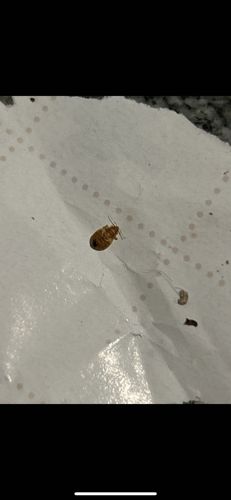Bed Bug
Scientific Name: Cimex lectularius
Order & Family: Hemiptera, Cimicidae
Size: Adults are typically 4-5 mm (0.16-0.20 inches) long, about the size of an apple seed.

Natural Habitat
Bed bugs typically live in close proximity to human hosts. They prefer dark, secluded areas such as mattresses, bed frames, headboards, cracks in walls, furniture, and electrical outlets.
Diet & Feeding
Bed bugs are hematophagous, meaning they feed exclusively on the blood of warm-blooded animals, primarily humans. They typically feed at night when their hosts are asleep.
Behavior Patterns
Nocturnal and highly secretive. They are adept at hiding and can go for extended periods without feeding. They are also known for leaving fecal spots (digested blood) and shed skins in infested areas. They do not fly or jump, but crawl quickly.
Risks & Benefits
Risks: Bed bugs do not transmit diseases, but their bites can cause itchy welts, skin irritation, and allergic reactions in some individuals. Infestations can lead to sleep deprivation, stress, and anxiety. Benefits: None known to humans or the ecosystem; they are considered a pest.
Identified on: 10/13/2025